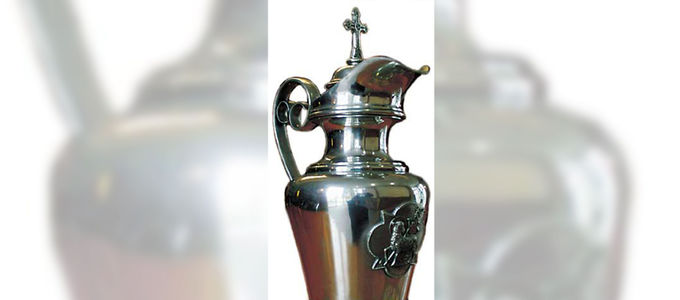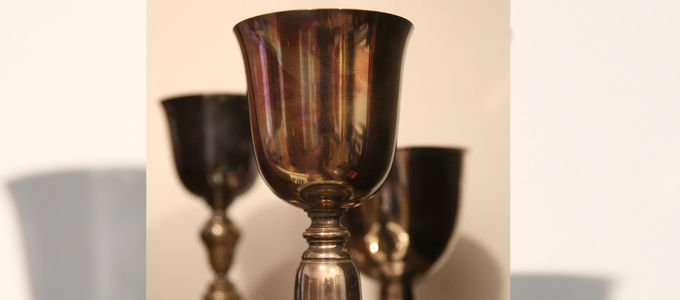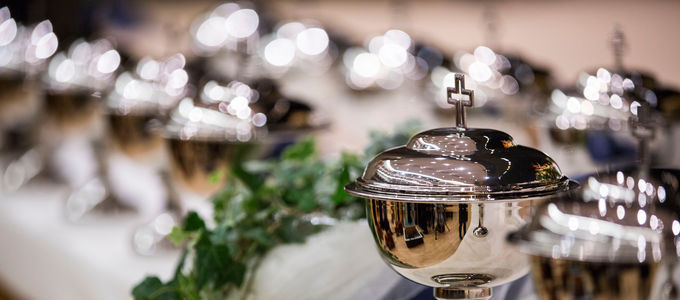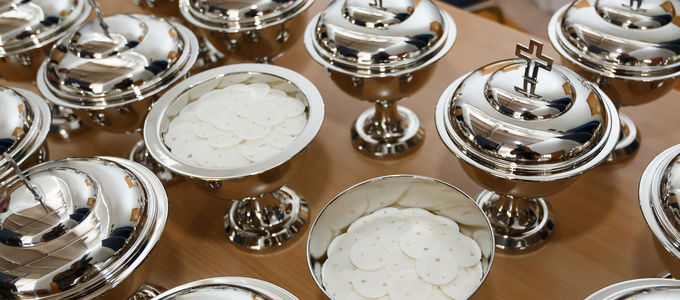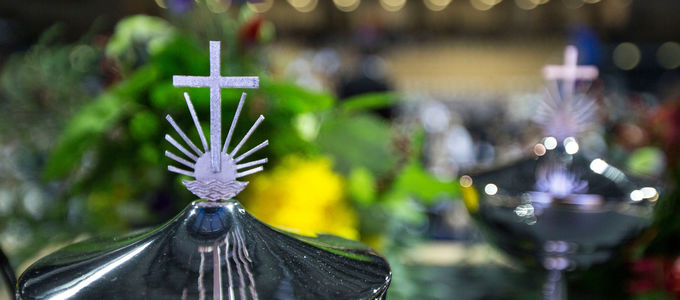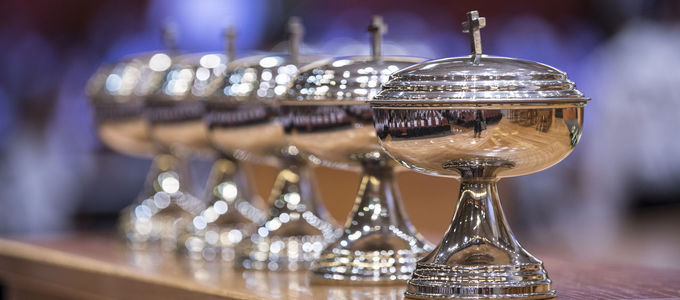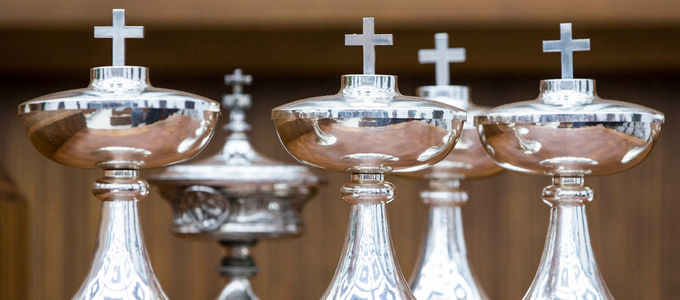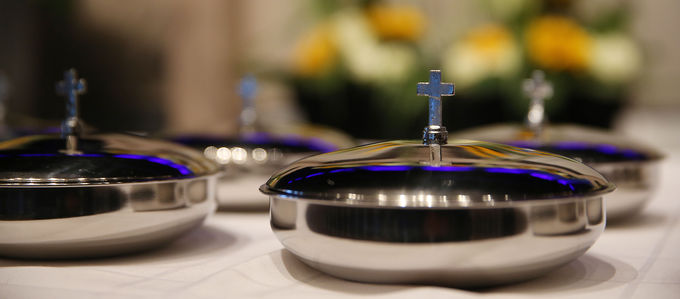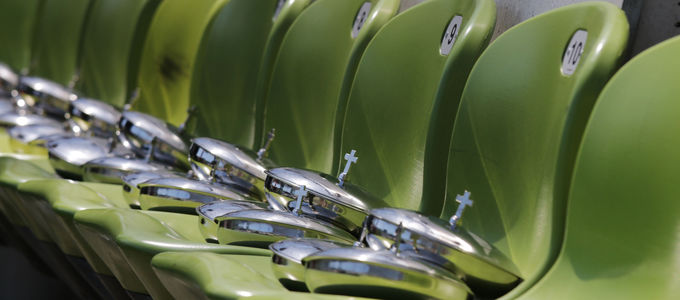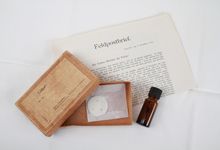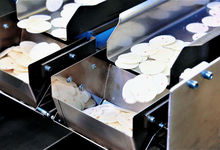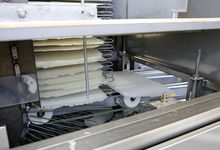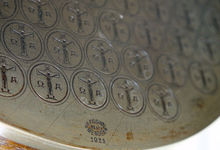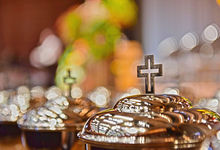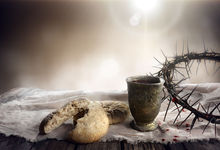The centenary of the communion wafer: the cup runneth over
Form is subject to content. When the wafer sprinkled with wine replaced the chalice, the communion vessels also began to slowly change.
Its place is on the altar, close to the officiant in the congregation of Frankfurt-West (Germany). It is ornately embellished, has no lid, but is covered with a cloth. Is that what a proper New Apostolic communion cup looks like? Well, not necessarily. The designs vary, but this specific cup tells us quite a bit about New Apostolic history.
It all began in 1917. Because of the hazard of infection, but also for economical reasons, the wine for Holy Communion was no longer dispensed in goblets but in the form of drops on a wafer. “The large communion pitchers no longer need to be placed on the altar, only the communion cups and patens,” Chief Apostle Johann Gottfried Bischoff wrote to the ministers in 1919.
Photos from the 1940s testify of quite a variety of liturgical vessels that must have been used for the Eucharist. No wonder, because the history of Christendom has set the Lord’s table lavishly with quite a variety of Eucharistic vessels. There are cups with and without lids. Those with an arched lid are called a ciborium. Wafers are kept in shallow dishes or plates, which are called patens. Communion linens are also used for the cup. The cups are placed on a cloth called a corporal, are wiped clean with a purificator, or are covered with a stiffened square card covered in white linen called a pall. And some chalices are covered completely with a chalice veil.
Prototype for a new design
Photos taken in the 1950s testify of a sudden trend towards uniformity. A communion cup began to emerge that was bulbous in shape. With time this shape came to be identified as typically New Apostolic. In a pragmatic way, this vessel combined the various traditions: the paten (the shallow dish) migrated into the cup as an insert. The arched metal lid distinguishes the vessel as a ciborium. The biggest embellishment was the cross on it. The vessel was distinguished by its simple design.
This model was initially produced in the south of Germany. Plain liturgical vessels were bought and finished in Cannstatt. This included coating the inside and outside, mounting the cross, and polishing the surface. Christoph Müller from Wurzen in the eastern part of Germany knows all about this. He works in metal casting and produces communion cups for the New Apostolic Church today.
And how does he know all this? His father already worked as a metal caster and reproduced precisely this design. A District Elder from East Germany who had been to West Germany had brought a ciborium back with him so that production of the new design could also begin in East Germany.
Diversity on the altar
A certain diversity has remained. Christop Müller reckons that in Germany alone about a dozen different designs are in use. These range from the simple post-war models made from sheet metal to copper or brass cups, all more or less bulbous. The stem is either long or short and a Church emblem or a cross are mounted on the lid, the latter either massive or as an outline.
In Africa liturgical vessels are sometimes crafted from wood. Patens—shallow dishes—with lids were developed especially for missionary journeys. They are lighter and easier to transport. These models were also used during the European Youth Day 2009 for example or at the International Church Convention 2014. They are currently being produced in India.
Very valuable and elaborately designed communion cups are still found here and there and are treasured as keepsakes. Some congregations in central Germany, especially in Hesse, still cherish their old gems from the early years. Like Frankfurt-West, the congregation that covers its communion cup with a cloth.
Article info
Author:
Date:
Keywords:
Sebastian Müller-Bahr,
Andreas Rother
30.08.2017
altar,
Holy Communion,
Denominations,
Congregational life



